Most Important Facts
- Location: Check-in at Port Renfrew on Vancouver Island; either you start the trek at Port Renfrew or you take a bus to Pacheena Bay
- Distance: 75 km
- Days needed: 3 to 7 days
- Infrastructure: rudimentary; marked trails, campsites at the beach with outhouses and bear boxes
- Costs: Trail permit costs CAD 127.50, also you need the Park Canada permit for CAD 67.70 (valid for all Canadian national parks), on top comes the one way bus ticket at the beginning or the end of the trek, which costs CAD 90
- Planning: Book several weeks ahead in busy season or if you are not flexible
- Useful links:
Our Packing List (Mirko’s Backpack: 17 kg, Natalie’s Backpack: 13 kg)
- Two large backpacks with rain cover
- Lightweight, rainproof tent for two people
- Two sleeping bags (down feather)
- Two inflatable camping mattress, two inflatable pillows
- Stove, cutlery, swiss army knife, gas for stove, lighter
- Bear bell and bear spray
- Food for seven days (we packed for two extra days, just in case)
Breakfast: porridge and crackers; Food during day: chocolate, energy bars, nuts, cookies; Dinner: rise, soup, pasta - First aid kit
- Water purifier tablets (every campsite is located at a creek, where you can refill your water bottles; always purify, boil or filter the water before drinking)
- Toilet paper, toothbrush, soap, mini towel
- Sun cream, sun glasses, sun hat
- Cloths: Two hiking shirts, one hiking trouser, long underwear for sleeping, rain coat, down jacket, two pair of hiking socks, one pair of socks for the evening, four pairs of underwear, hat, gloves, flip flops and high cut hiking boots
- Camera gear (Sony a7r II, Zeiss Loxia 21mm 2.8, Sony 55mm 1.8, ND-Filter, mini tripod, peak design backpack mount)
- GPS watch and smartphone
- Two camel water bags, two water bottles
- Diary and pen
- Torch light
- Plastic waste bin as you have to take all your garbage with you
- Cash
What We Whished We Brought
- Gaiters
- Hiking sticks
- Swim suit
- Salami and cheese
What We Wished We Didn’t Bring
- Food for additional two days
- Rain trouser
- We only needed one can of gas, we brought 3 cans
Our Way Of Hiking The West Coast Trail
Dates of hike: May 23rd to May 27th 2018 –We were lucky and had a good weather window in the last week of May. There was not a single drop of rain during our trek. Under similar circumstances, we would definitively do the trek again and recommend it to anyone who loves hiking and seeks an adventure.
Nature and scenery along the breathtakingly beautiful west coast of Vancouver Island is characterized by rugged coasts and lush temperate rainforests. There is also lots of wildlife around, just to name some animals you can potentially see: black bears, wolves, cougars, sea lions, seals, deer, bald eagles and tidal pools along the beaches that are filled with starfish, anemones, mussels and crabs.
Interestingly, the trail had its beginnings in the early 1900s where more than 250 vessels were lost to severe coastal storms and poor navigational equipment along the west coast of Vancouver Island, also called the “Graveyard of the Pacific”. Governments of the time made efforts to help the situation and built lighthouses that today are still functional. Additionally, they built the West Coast Trail as a “Lifesaving Trail” – a way to rescue shipwreck survivors along the coast.
Before we started the trek, we thought we could do it in three nights and four days. We normally walk one kilometer within roughly 15 minutes and are used to several day treks. This would mean, we could split up the different stages of the trail in four day hikes of approximately 19 kilometer and five to six walking hours. Not too bad, right?
As soon as we started this trail, however, we realized that our calculation does not work for the West Coast Trail. The rooty and muddy trail climbs up and down so many times that it was really unpredictable how long we would need until the next camp. Sometimes, we used the “normal” 15 minutes for one kilometer, sometimes it took us up to 45 minutes for one kilometer. Also, we needed a lot of energy for carrying our heavy backpacks, climbing steep ladders to cross creeks, riding cable cars that you get moving with your bare hands and of course, making noise during the whole hike, as many black bears are in the region.
Therefore, we decided after the first day to do the trek in five days and four nights, in order to enjoy it even more. Below, I describe these five days briefly.
Day 1: Pachena Access to Tsocowis Creek, 17 km, 31000 steps
Especially for me, the first day was the hardest. I was afraid of bears and struggled with my heavy backpack. Also the two big (and fresh) bear poo we stepped over on the trail did not help to calm myself… (Mirko can tell you more about that). Luckily the hike was not steep or technically difficult. We passed many beautiful boardwalks through the pacific rain forest. All the different plants and trees around us amazed me. The night camp was on the beach, with a stunning view over the rough pacific.
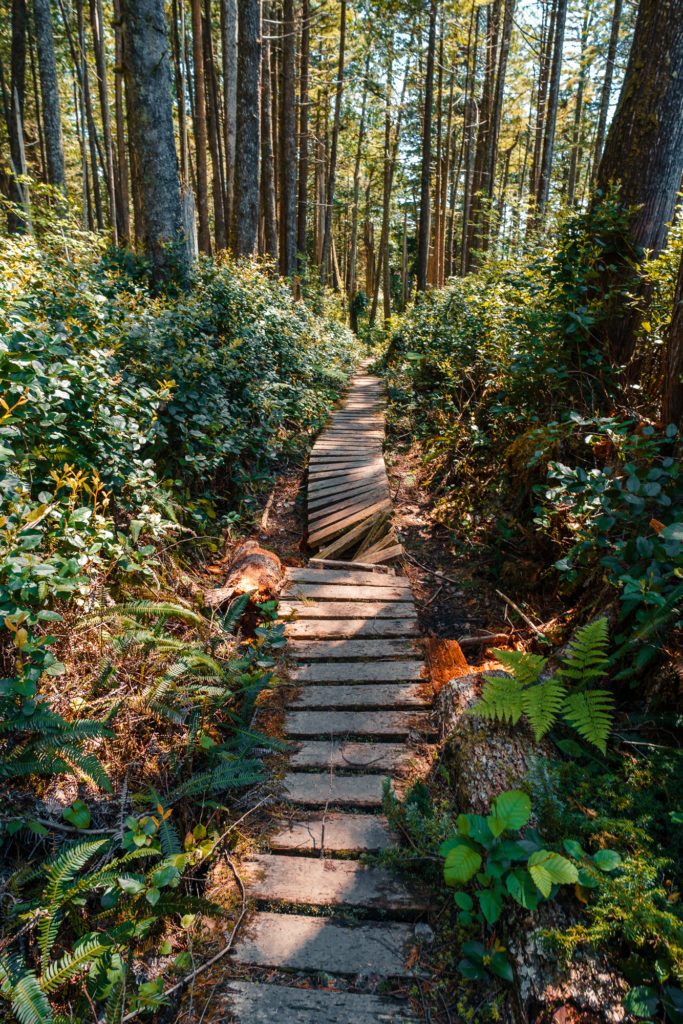
Day 2: Tsocowis Creek to Tsusiat Falls, 9 km, 18000 steps
The second day was a short hiking day. We wanted to go further than 9 km, but there was no camp open between Tsusiat Falls and Carmanah Creek. This was due to wolf packs in the region that do not tolerate tourists camping on the beaches. So we walked only in the morning, nice and slowly, passing a huge creek with a really cool one person gondola. Once we reached the Tsusiat Falls camp, which was with 15 campers rather crowded, we were rewarded with a cold bath in the Tsusiat waterfall.
Day 3: Tsusiat Falls to Carmanah Creek, 20 km, 40000 steps
Physically, this day was the hardest. We already started hiking at seven in the morning. And just a little later, we had our first ever bear encounter! We saw a black bear. He was staring at us, only from 40 meters distance, sitting in the middle of the hiking trail. After two or three seconds, luckily, he walked away and we could continue. Adrenaline level was high for at least another 30 minutes. We calmed down when we took the ferry that crosses the Nitinaht river. At the small ferry port we bought a cup of coffee. Also they would sell crab burgers and other snacks. After this break, we walked several hours through the forest, passed some really nice view points on the cliffs, listened to hauling sea lions and saw a picturesque lighthouse. At 5 pm Mirko was in seventh heaven when we finally reached the little beach restaurant that sells burgers. Every hiker on the West Coast Trail knows, this is the only proper restaurant along the whole 75km long trek. And really: Every dollar of this rather expensive burger is worth it.
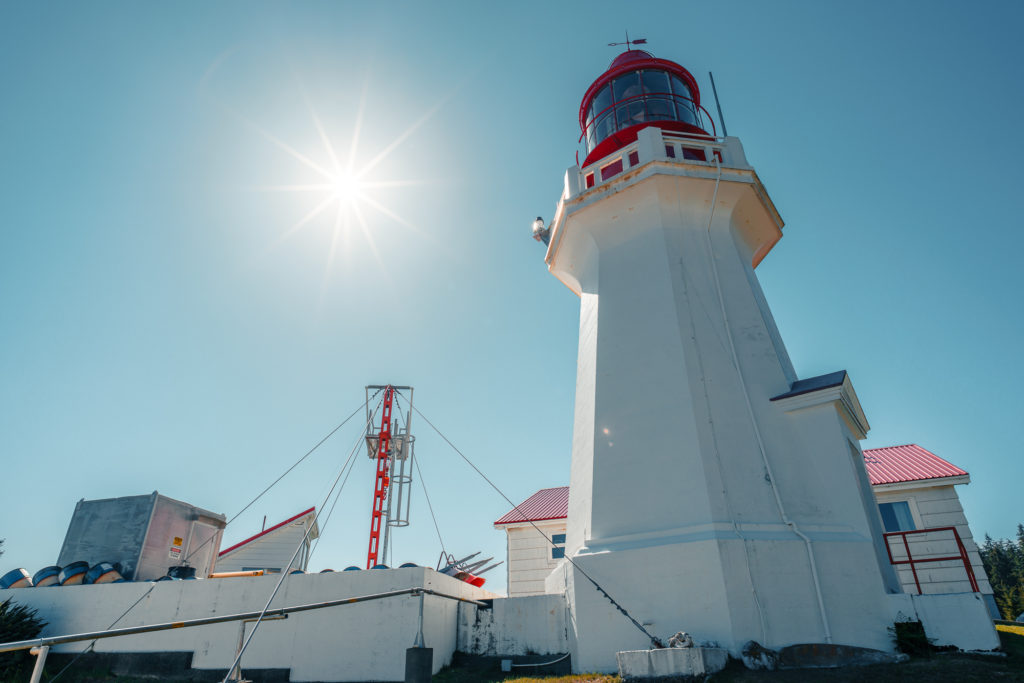
Day 4: Carmanah Creek to Camper Bay, 16 km, 30000 steps
I do not know how many meters we had to climb up and down steep ladders to cross the three giant creeks on the fourth day. But it was enough to get sore arm and leg muscles in the evening. In addition, we had to hike 9 kilometers directly on the beach, always with the tide timetable in mind. If we would have started hiking too late or walked too slowly, we would have risked that our way was cut by high tide that submerges the trail completely. As if this was not enough, the trails in the forest were really muddy. The mud pits sometimes were so huge that we had to climb over tree branches and bushes in order to keep our feet dry. Mirko, leading the way, missed one step and there it was: mud all over his left foot and leg. We were more than happy when we reached the beach camp and could warm our bodies on the camp fire.
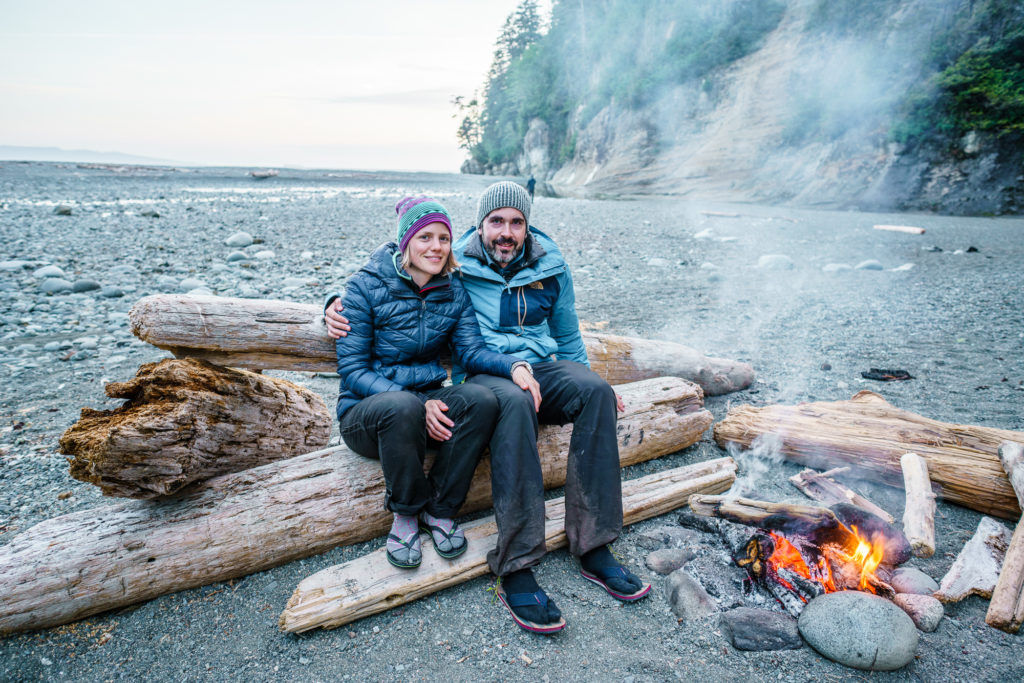
Day 5: Camper Bay to Port Renfrew, 13 km, 24000 steps
The last 13 kilometers were quite an effort. But a beautiful one. We had to climb again a few ladders and also, hiked up to the highest point of the trail (210 meter above sea level). The sun was warm, the views over the pacific again very nice. In the forest, we passed by an old, impressive and rusty steam donkey. This is a steam-powered winch that was used in the past for logging. The winch would have a rope or cable around it that would be taken off into the woods by the so-called “line horse”. The cable would be attached to a tree that had been cut and then drag the log back to the steam donkey using the winch. Getting closer and closer to the trails end, we were looking forward to a proper shower and a long break, as we felt really tired. We were quite proud when we have reached the small ferry port at the trails end. Climbing down the last ladder steps and taking off the hiking boots, walking a few steps into the cold ocean was indeed better than any chocolate in the world.
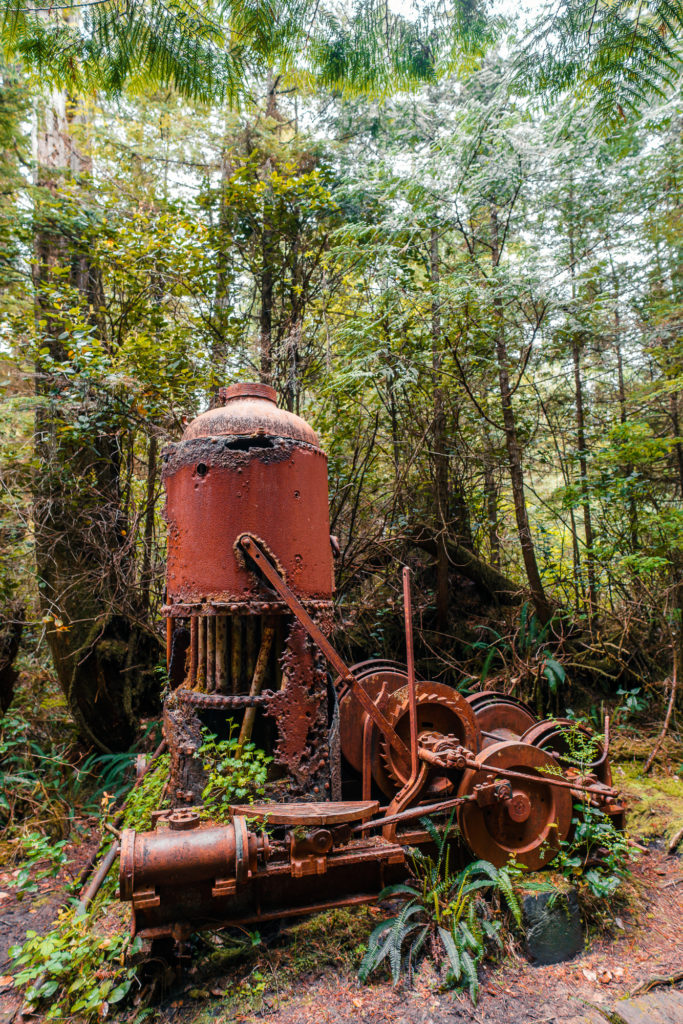
Our Recommendations
- Go to the rangers office one day before you start the trek. There is a obligatory orientation lesson that you have to take, where you get information about the trail, the hikers etiquette, the risks as well as the weather conditions. If you take the lesson one day before, you do not loose time at the first hiking day.
- Hike the trail from North to South. Leave your car in Port Renfrew and take the bus up to Pacheena Bay. The first half of the trek is easier, so you can hike the more difficult part with a lighter backpack. Also you do not need to get on the 3 hours long bus ride in the end, you can head straight to the shower.
- Buy gas cans and food before you reach Port Renfrew, for example in Victoria. At Port Renfrew, everything is significantly more expensive than in Victoria.
- Take your smartphone with a loaded maps.me (Vancouver Island map downloaded) with you. Keep it in the airplane mode and just use it for navigation. There almost no reception along the whole trail. (Nice for a digital detox.)
- Pack all your stuff in different waterproof bags. Every evening, you need to put your food and your toiletries away in bear boxes of the camp.
- Check the weather and do not hike if there is a lot of rain or a storm approaching.
- Don’t be too nervous about bears. In the last 20 years, no one died or got attacked by a bear on the trail. But follow all the rules concerning wildlife safety, as there are also cougars, wolves and hungry mice around the campsites.
- On the last day, make sure you plan to hike down to Owen Point at the right time. Unfortunately we could not see the hidden caves at the beach, as there was high tide. But we heard, this must be beautiful and we would change some of our hiking plans next time to actually be able to see that highlight.
Our Trek Rating And Résumé
- Technical difficulty: 6/10
- Necessary fitness: 7/10
- Scenery: 8/10
- Wildlife: 10/10
- Fun: 8/10
This trail is a true adventure. We loved it.

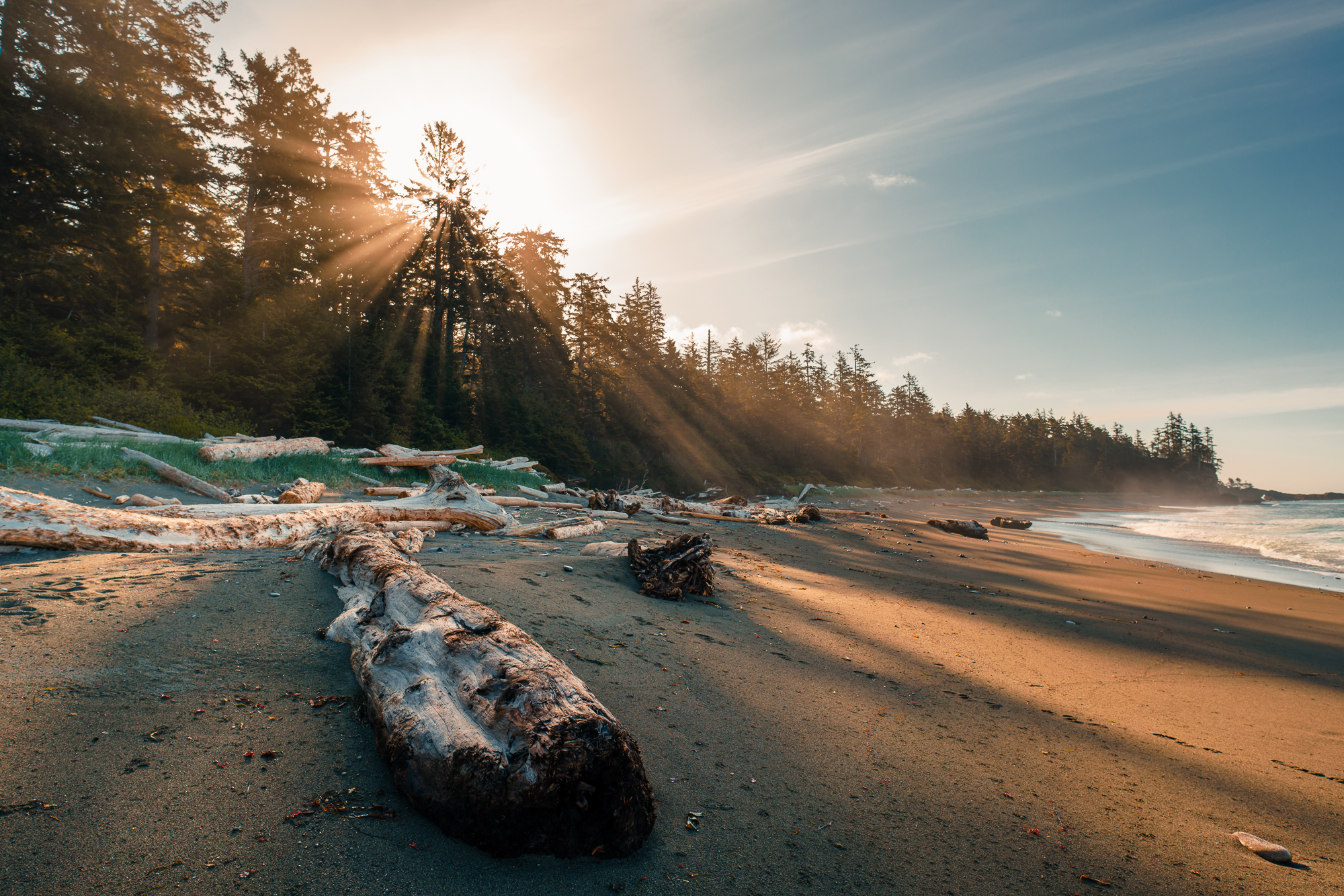
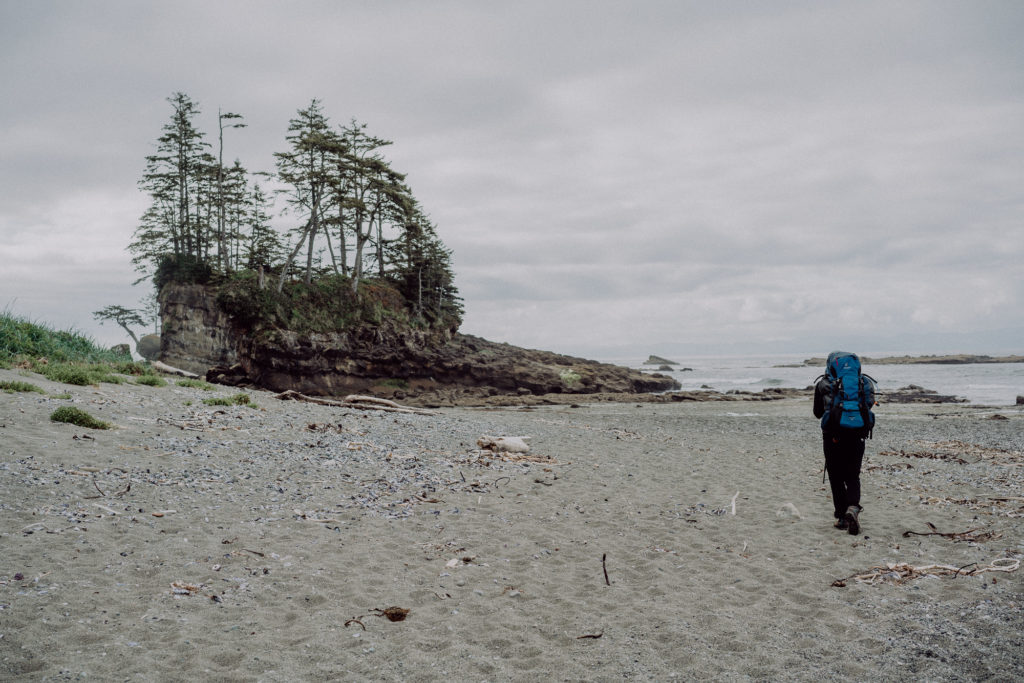
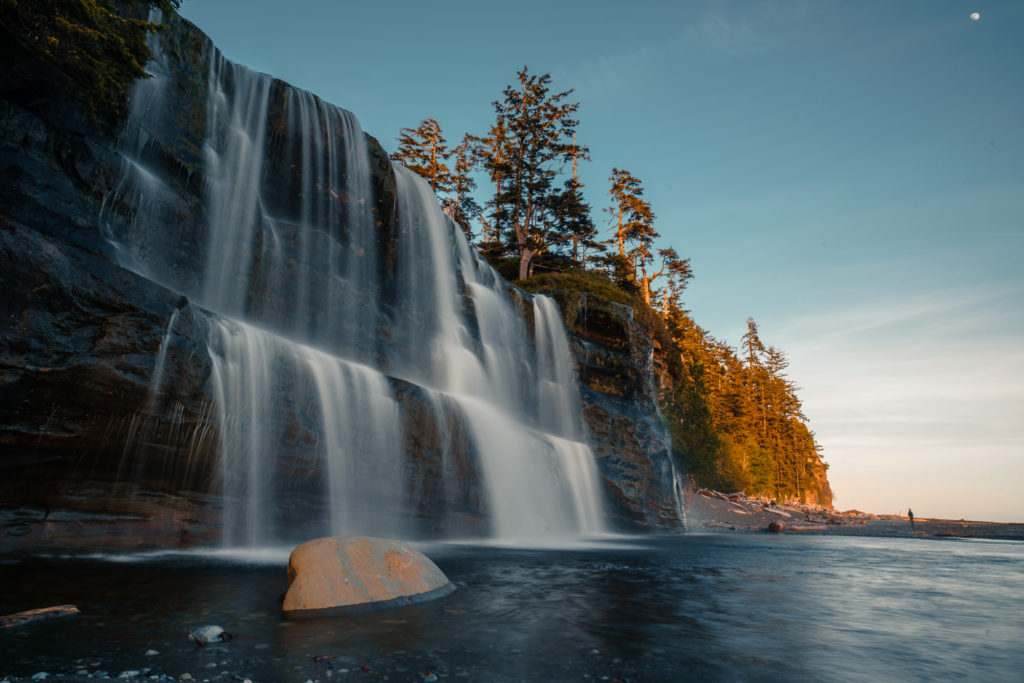
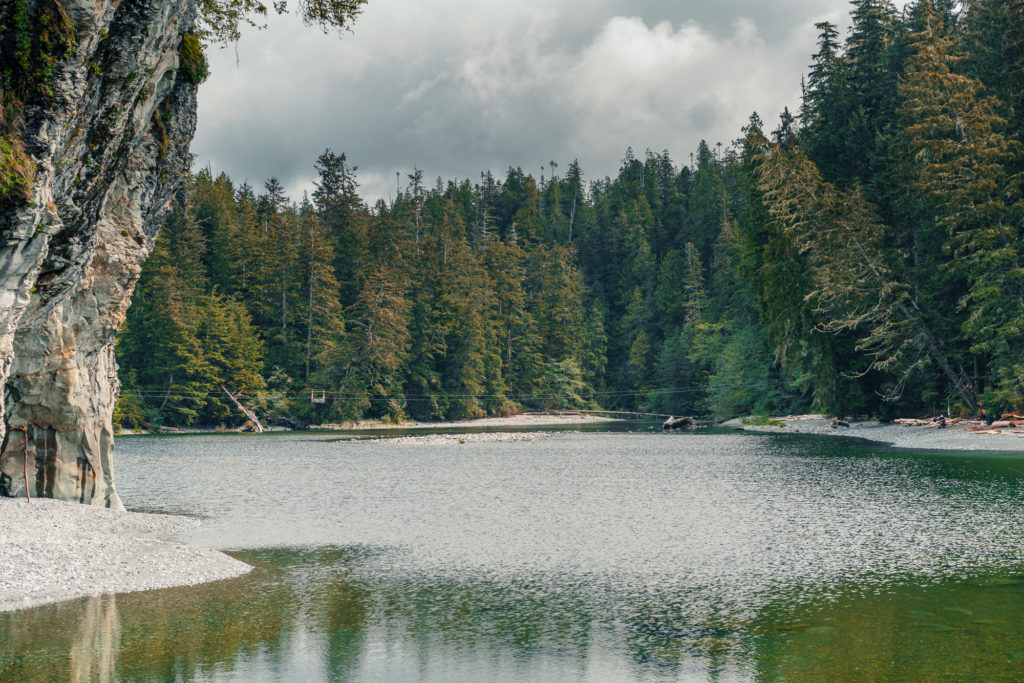
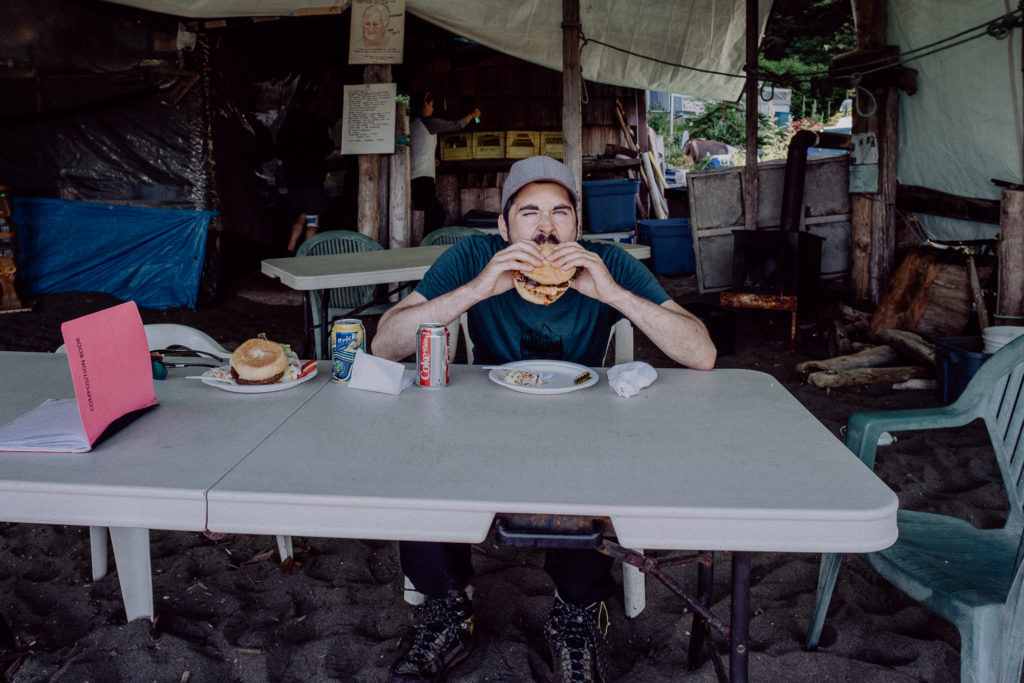
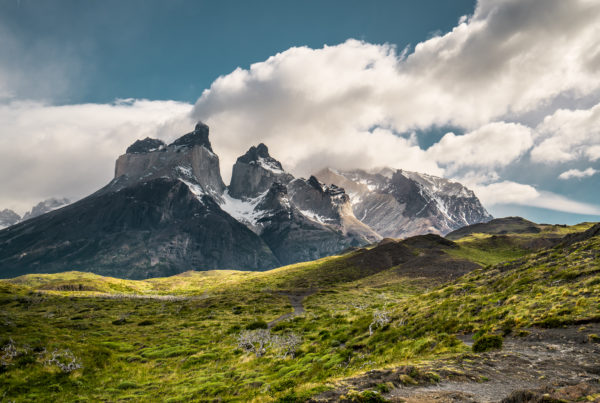
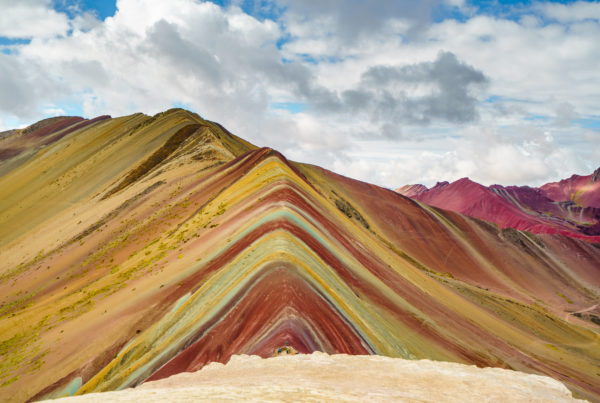
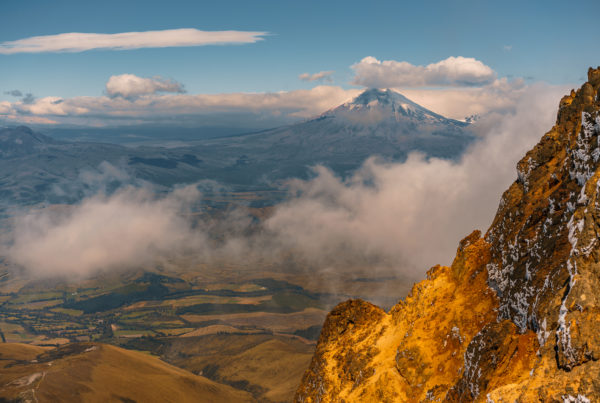
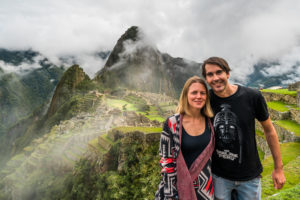
Thanks for the English version Natalie. It’s wonderful to read and enjoy your adventure from afar! Abby
Dear Abby, thanks a lot 🙂 Glad that you like our blog. We hope you are doing good. A big hug from Alaska, Natalie and Mirko